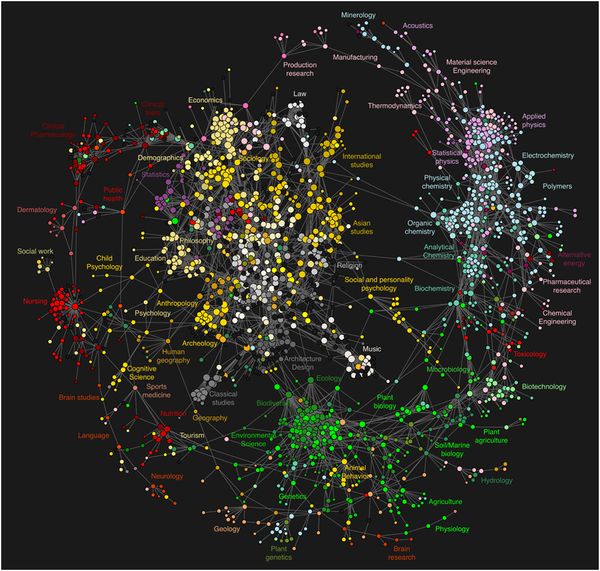The Dictionary of Words in the Wild has made it to over 5000 words thanks to its many contributors.
We also made a smooth transition over to the University of Alberta and a new domain name: lexigraphi.ca.
The Dictionary of Words in the Wild has made it to over 5000 words thanks to its many contributors.
We also made a smooth transition over to the University of Alberta and a new domain name: lexigraphi.ca.
Thanks to Peter I came across an article in The Philosophers’ Magazine titled The real thing? (by Julian Baggini, Issue 43, posted May 5, 2009) about social epistemology. Social epistemology according to Alvin Goldman, who was interviewed for the article, examines the social dimension of knowing. Goldman is quoted as saying,
Historically, epistemology focused on how you can get the truth about the world. The question for social epistemology is something like, how does the social affect people’s attempts to get the truth? So what I want to do, and this has been part of my efforts for these 10 years or so, is to try to give a bigger focus to the social side of epistemology, while remaining continuous with the philosophical tradition.
Thanks to James K I discovered Twitterfall which shows a waterfall of tweets based on keywords and other settings. An interesting example of what St̩fan Sinclair and I call a Knowledge Radio Рan application that organizes knowledge into a live stream.
I put a photo set up on Flickr for our Hacking as a Way of Knowing project. The set documents the evolution of the project which I’ve tentatively named the “ReReader for the Writing on the Wall”. Thanks to all those who made the project and the workshop a success. Now I have to think a bit deeper about making as knowing and things as theories.
So a bunch of us started a project yesterday as part of the Hacking as a Way of Knowing workshop. Ours is, of course, the best project. We have motors that drive a reading of a fax carbon based on a “knowledge radio” on the Day of Digital Humanities.
Today was the first day of the Hacking as a Way of Knowing e-waste fabrication workshop. Above you can see the text from a fax thermal printer roll projected onto a wall. (At least I think that’s what it is.) Below is an Arduino connected to a a speaker. Stéfan has working on taking a RSS feed and triggering events so we can connect stuff to it to create cool stuff.
We got talking about why fabrication is taking off. Turkel has his lab. Matt Ratto at the Univerity of Toronto has a lab (with a great name – CriticalMaking.com. Some of the reasons are:
From Steve Ramsay’s twitter I discovered goosh.org – the unofficial google shell. What an idea! I’m not sure what I would use it for, but it seems dangerously close to brilliant.
 Clickstream Data Yields High-Resolution Maps of Science is an article that presents an interesting view of the interdisciplinary relationships between the humanities and social sciences, on the one hand, and the sciences on the other. The article used “clickstream” data or usage data collected at various scholarly portals that show not citation links but connections in the activities of the users.
Clickstream Data Yields High-Resolution Maps of Science is an article that presents an interesting view of the interdisciplinary relationships between the humanities and social sciences, on the one hand, and the sciences on the other. The article used “clickstream” data or usage data collected at various scholarly portals that show not citation links but connections in the activities of the users.
The resulting model was visualized as a journal network that outlines the relationships between various scientific domains and clarifies the connection of the social sciences and humanities to the natural sciences.
They describe the visual appearance of the visualization (above) thus,
To provide a visual frame of reference, we summarize the overall visual appearance of the map of science in Fig. 5 in terms of a wheel metaphor. The wheel’s hub consists of a large inner cluster of tightly
connected social sciences and humanities journals (white, yellow and gray). Domain classifications for the journals in this cluster include international studies, Asian studies, religion, music, architecture and design, classical studies, archeology, psychology, anthropology, education, philosophy, statistics, sociology, economics, and finance. The wheel’s outer rim results from a myriad of connections in M’ between journals in the natural sciences (red, green, blue). In clockwise order, starting at 1PM, the rim contains physics, chemistry, biology, brain research, health care and clinical trials journals. Finally, the wheel’s spokes are given by connections in M’ that point from journals in the central hub to the outer rim.
This article came out of work funded by Mellon at the MESUR project.
At the end of the week I’ll be going to Toronto for what I expect will be one of the most interesting workshops ever. William J. Turkel at Western has organized a hands-on workshop on Hacking as a Way of Knowing to reflect on electronic waste and data about the environment. The short description of the purpose is,
This three-day workshop will explore the theme of E-waste and environmental data. Working in small groups, participants will be given the task of hacking some typical consumer e-waste to create reflective technological assemblages that incorporate ‘nature’ in some form while calling one or more of our basic assumptions into question.
This is not so much about building something, but about thinking about how fabrication (hacking) is a way of thinking through AND in this case we will be thinking through the environment and all the waste around computing. I suspect I’m going to be embarassed by how much I waste.
 From IBM Labs YouTube presence news of a IBM “Watson” System to Challenge Humans at Jeopardy! IBM’s Watson is a Question Answering system that IBM scientists hope “will be able to understand complex questions and answer with enough precision and speed to compete on Jeopardy!” (From the IBM press release.)
From IBM Labs YouTube presence news of a IBM “Watson” System to Challenge Humans at Jeopardy! IBM’s Watson is a Question Answering system that IBM scientists hope “will be able to understand complex questions and answer with enough precision and speed to compete on Jeopardy!” (From the IBM press release.)
Watson will be designed to deftly handle semantics “the meanings behind words” which will enable it to answer questions that require the identification of relevant and irrelevant content, the interpretation of ambiguous expression and puns, the decomposition of questions into sub-questions, and the logical synthesis of final answers. In addition, Watson will compute a statistical confidence in the responses it provides. Watson will be designed to do all of this in a matter of seconds, which will enable it to compete against humans, who have the ability to know what they know in less than a second. (From Addendum: About IBM’s Watson System)
The language IBM uses around this project is that of a “Grand Challenge.” It is smart how they have taken a analytical problem and used Jeopardy to give a target for the research, both in terms of speed and the types of questioning handled. Jeopardy also gives them a dramatic venue to demonstrate their progress just as Deep Blue playing Kasparov did.
The research is based on a Open Architecture for Question Answering (OAQA) that was jointly developed with Carnegie Mellon.